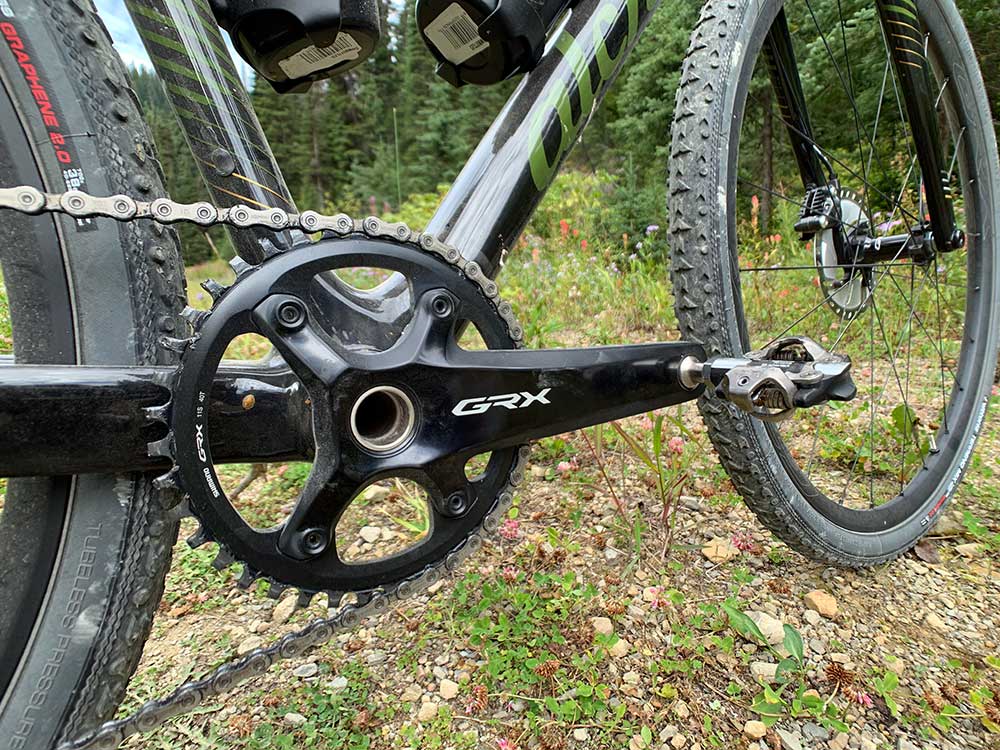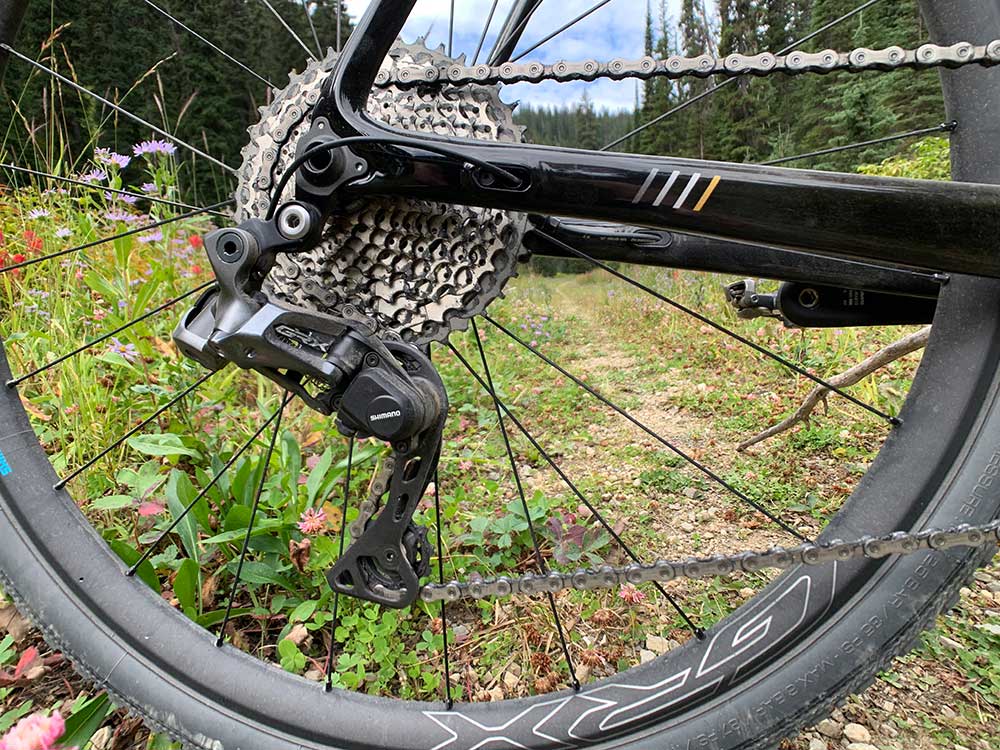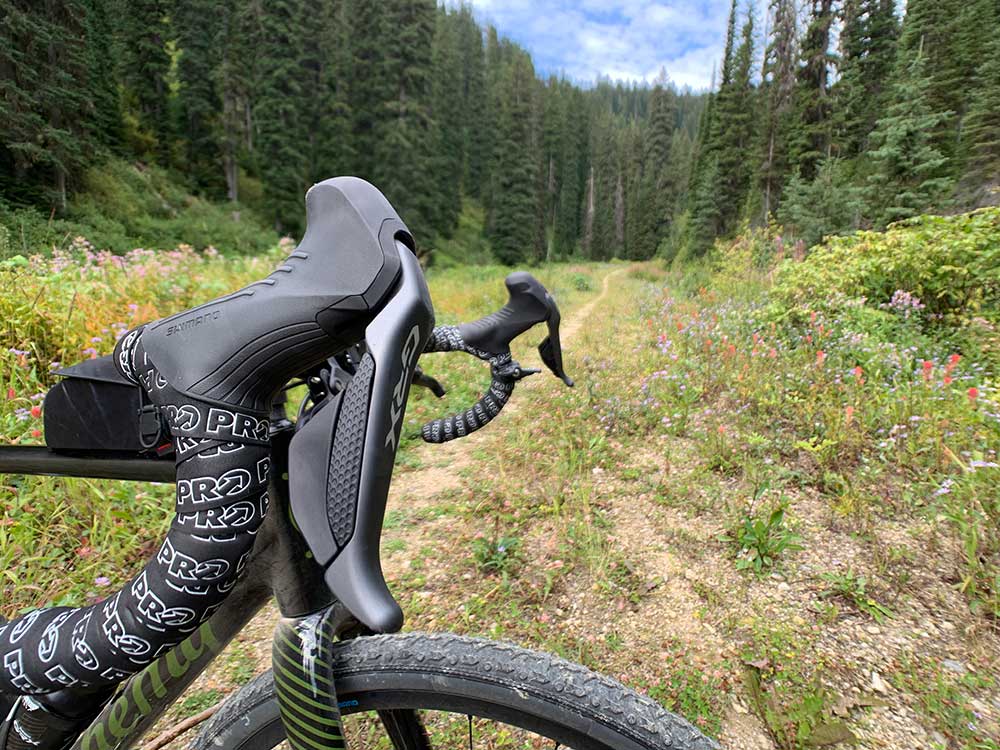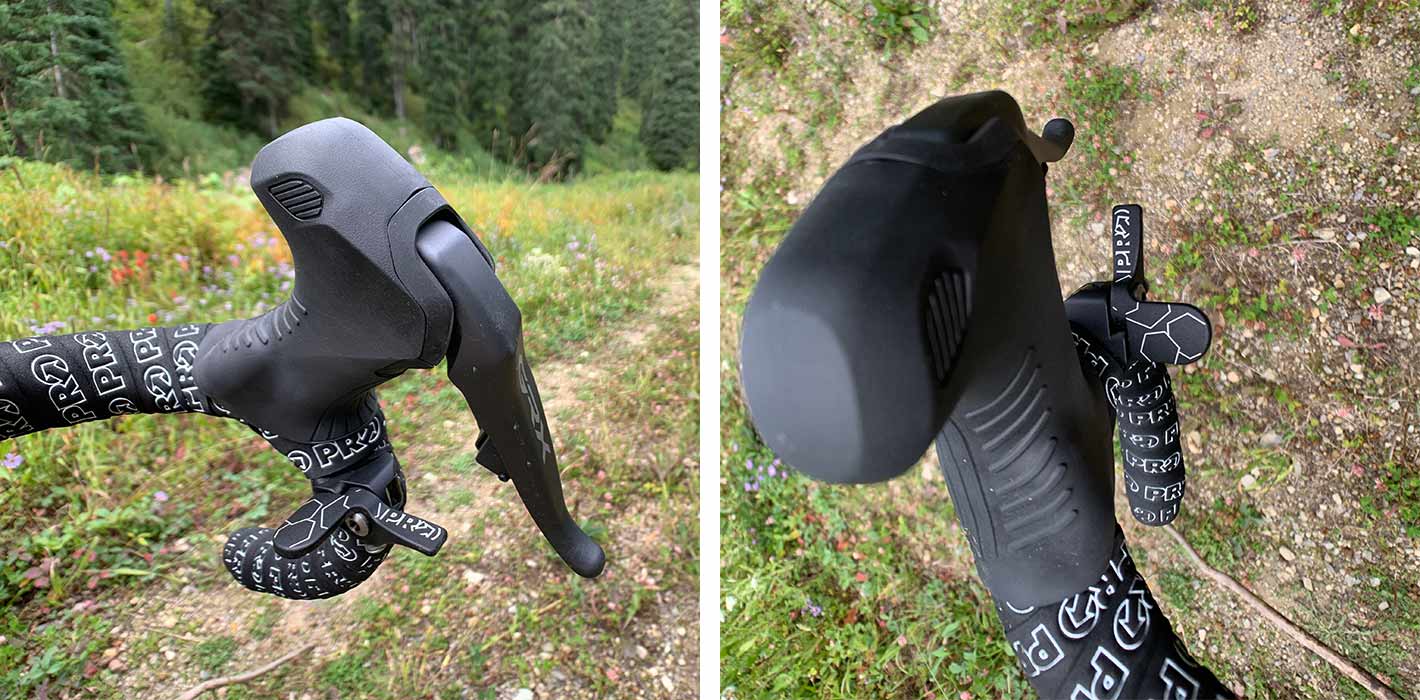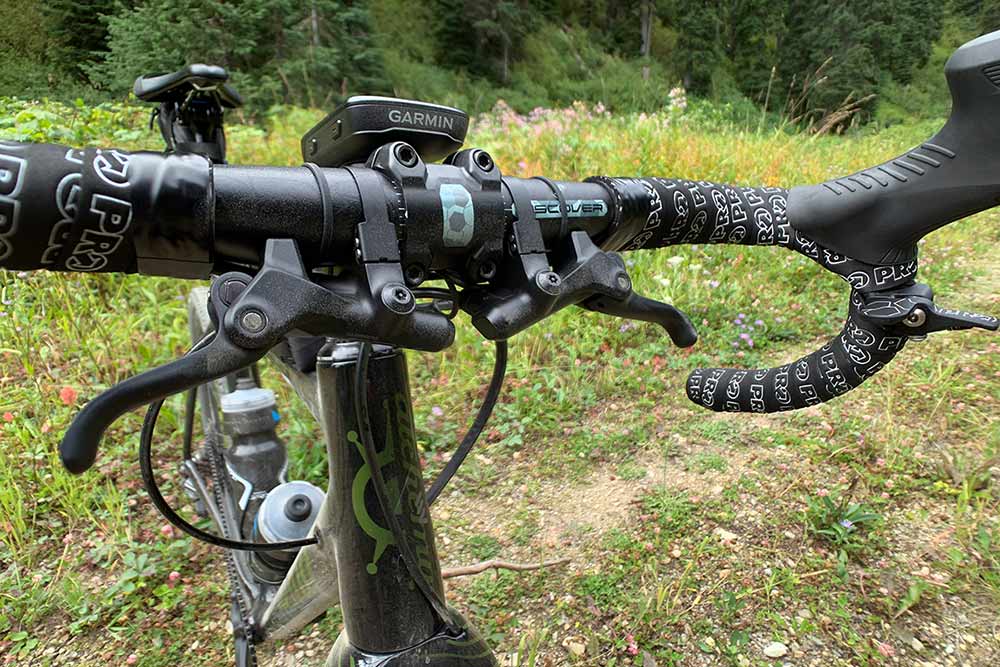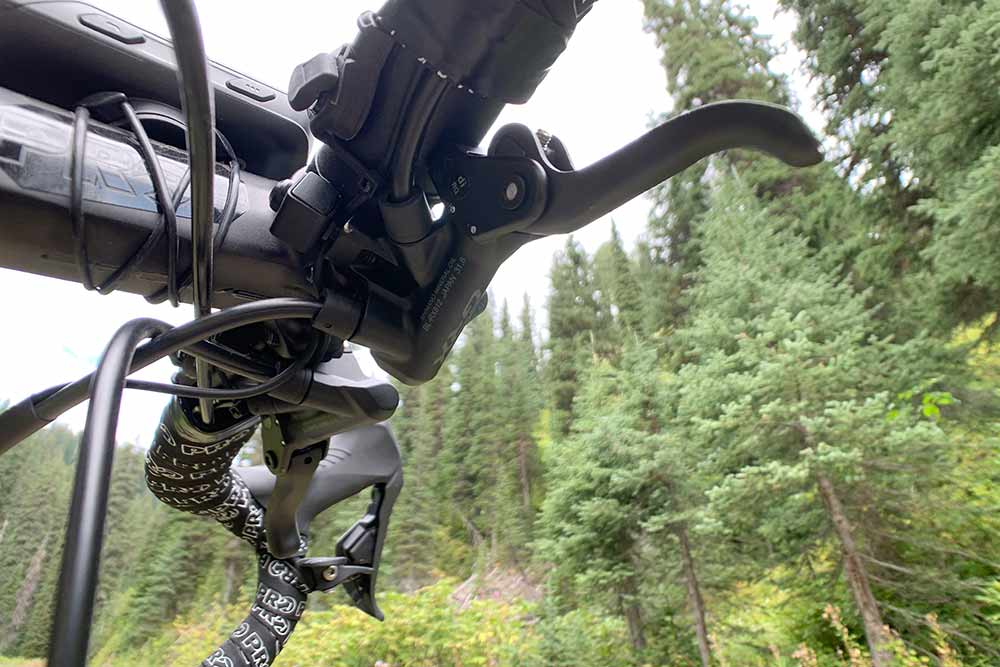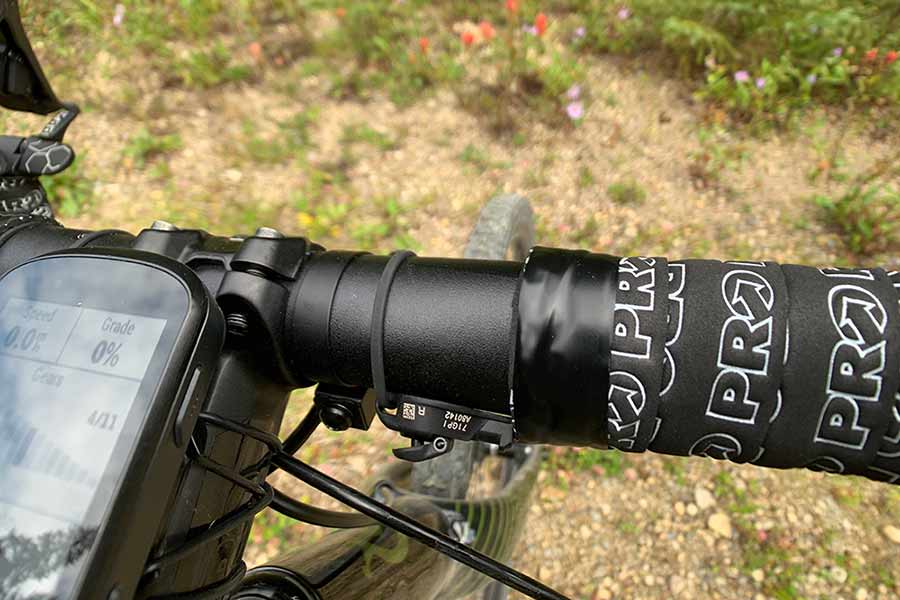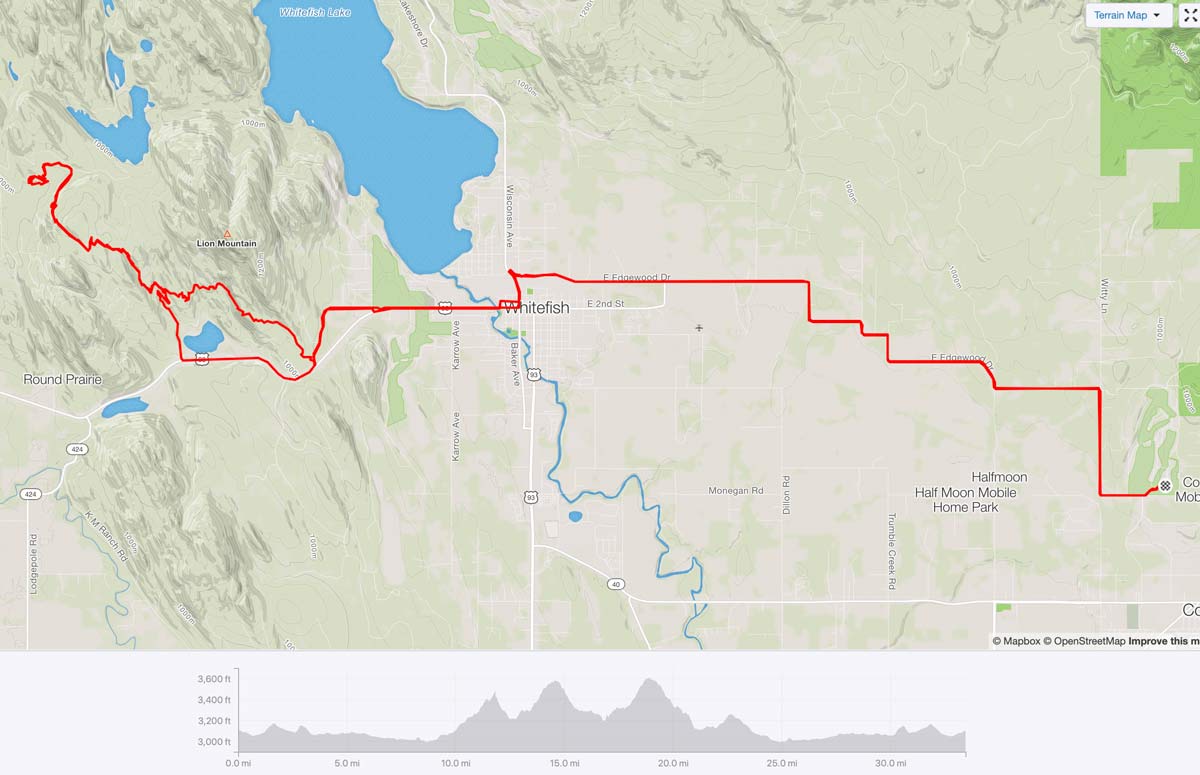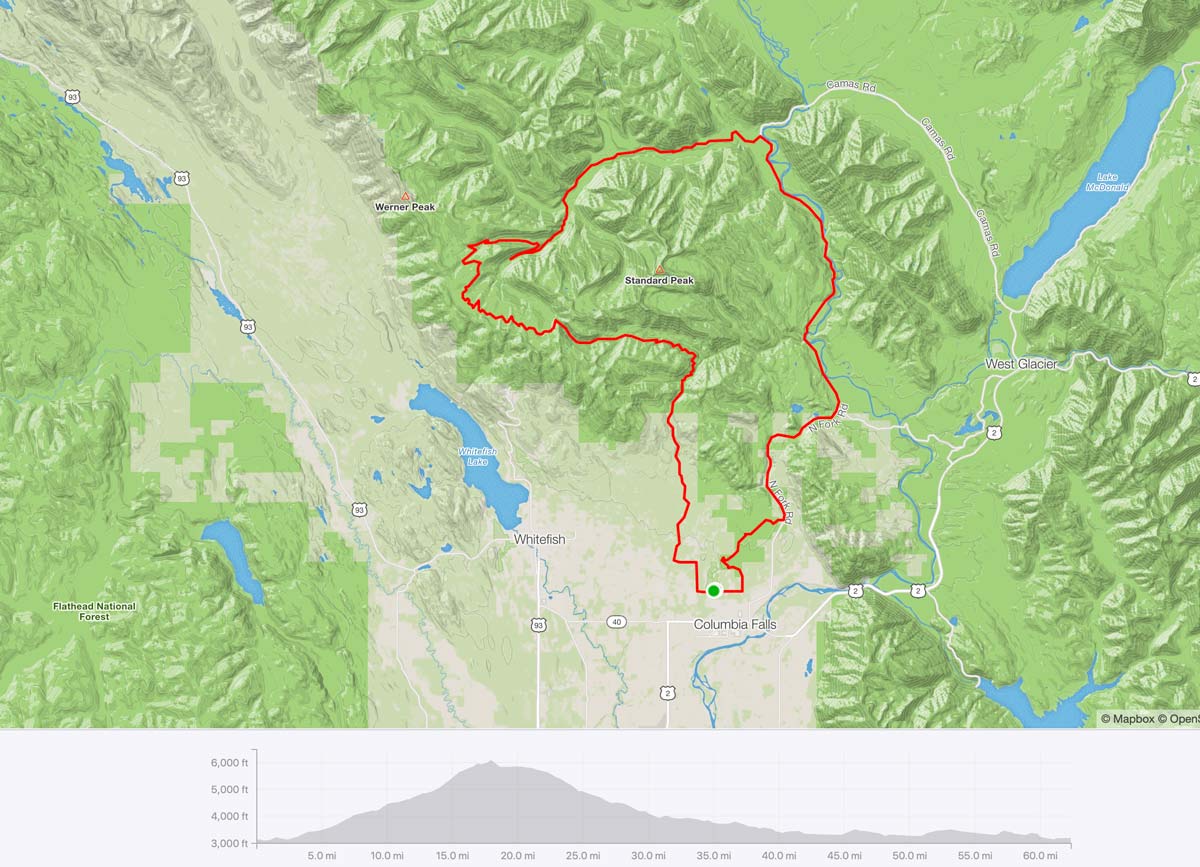Introduced in May, the Shimano GRX gravel components were the first drivetrain groups 100% dedicated to and built from the ground up for gravel bikes. From gearing to construction to ergonomics, every consideration was gravel-centric. The result are two groups -mechanical and electronic- that offer very specific features fine tuned not just for gravel, but for the type of drivetrain you’ll be running. Choose from 1x or 2x and you’ll end up with more than a different crankset and front derailleur tacked on. Instead, the rear derailleurs are optimized for the amount of chain those two setups use, and the gear size in the front. And then there’s the cassettes, which have a wider range (naturally) for the 1x fans.
All of the technical info can be found in our original launch coverage. Here, I’ll run through some of the highlights and share my first impressions after riding two big days in and near Whitefish, Montana…
Shimano GRX Di2 video review
For a look at the types of roads and trail we tested the GRX Di2 group on, and to see the components in action over a variety of surfaces and more, watch this video. Now, on to the photos…
GRX Di2 group overview
Functionally, about half of the parts and most of the technology is the same between the mechanical and electronic groups. So, what’s different between GRX mechanical and GRX Di2? The battery, obviously, but the biggest difference is in the brake/shift lever and hood shapes. We’ll get there in a moment.
The cranks are the same between the two, and you can choose between 1x and 2x. The 1x crankset can swap into any current Shimano 11-speed group, but the 2x will require both the crankset and GRX front derailleur. Why? Because they’re spaced outboard slight to allow for bigger tire clearance around the chain, so you’ll need both to get proper shifting and performance.
The 1x chainrings do have slightly varied alternating tooth profiles (shown in the video), but it’s no where near as dramatic as on their mountain bike chainrings. Even so, I never dropped the chain off them.
I did, however, have the chain bounce off the cassette and land between the small cog and the dropout, but it was on a particularly bouncy downhill corner, and I may have been trying to shift at the same time…or accidentally hit the shift button. I’m pretty sure it was a fluke as there were no other shifting issues at any other time during our 9-10 hours of total ride time.
I chose the 1x option to go on a Alchemy Ronin, and selected the 40t chainring and 11-42 cassette. This was a great setup and offered the right range for everything from big climbs to fast descents. Yeah, I coulda spun out on the fire road descents if I wanted to, but I felt my speeds were plenty fast enough considering the conditions. But you have options if you want something different.
The GRX Di2 levers are the real reason to upgrade to the electronic shifting. I’ve ridden both groups, and the higher brake lever pivot point offers a noticeable improvement in single-finger braking power. Both get the awesomely wide and flat finger surface, but you have more leverage on the Di2 version.
They also equipped my bike with the PRO dropper post and new drop-bar remote. This one’s a clever option that lets you drop it by pulling up on the front while on the hoods, or pushing down from the rear while in the drops. At first, just standing over the bike, it seemed like it would get in the way. On the ride, though, it fits between the fingers with minimal encumbrance. You’ll want to fiddle with the position and ride around some before wrapping your bars, though…it’s worth getting this one right the first time.
The other treat was their GRX Sub Levers, an inline hydraulic brake lever option that’s far more useful than you might think. We were given the option to have it installed or not, and I replied “no thanks”. Fortunately, they went ahead and installed them on everyones’ bikes anyway, and I’m glad they did. They’re awesome.
They could also allow for some very clean installs, too. While my bike had the brake hoses flaring out to either side far more than necessary, the hoses actually exit the Sub Levers facing straight backward…which you could use to minimize exposed hose for lines that run into the downtube.
Pair those with the Di2 remote shift buttons and you can do everything from the tops of the bars. It’s a killer setup, with one caveat: There’s no room left for your out-front computer mount. So, you’ll need a stem with a faceplate mount, or strap a mount to your stem. Or just mount the brakes a little wider, but then you run the risk of encroaching on the hood area. For reference, these bars should be 44cm wide (I didn’t check, but that was my parts request.
Shimano GRX Di2 ride review
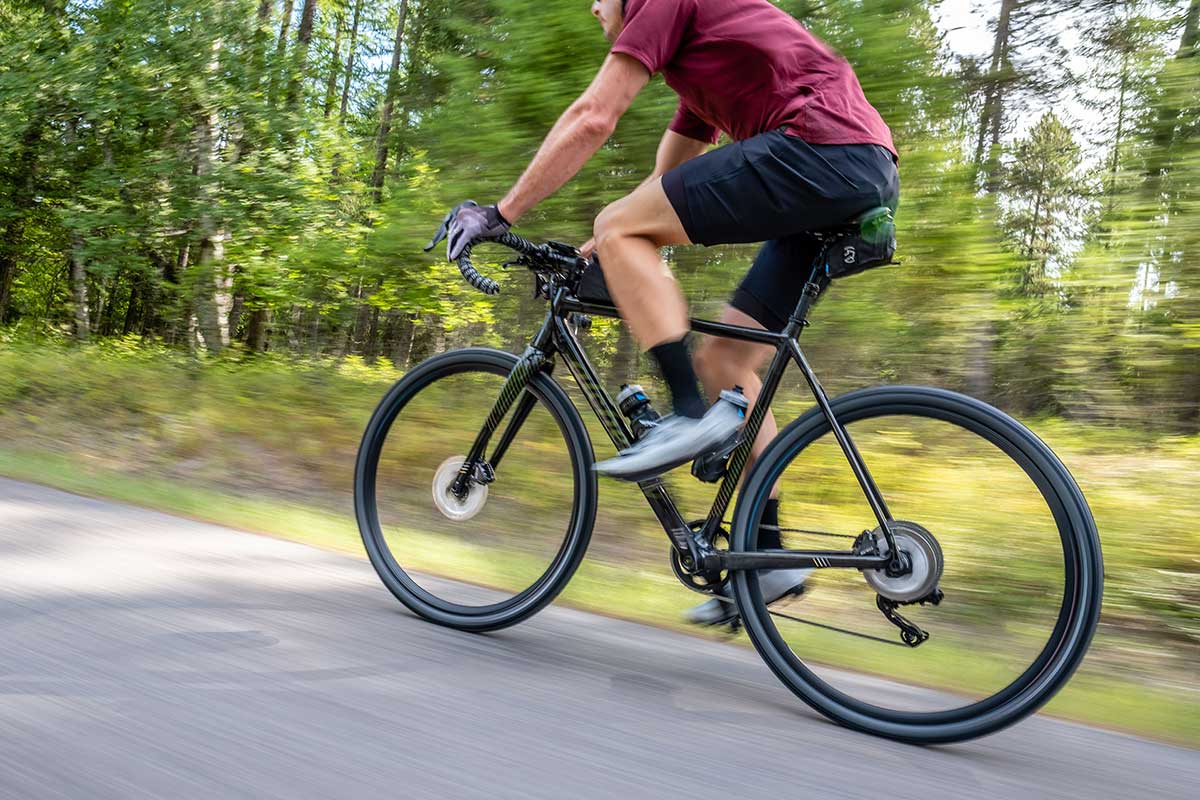
Day one of our test rides had a few miles of pavement leading to the amazing singletrack in Whitefish, Montana. The route had us climbing and descending on some seriously flowy trails that were perfectly suited for the bikes and the group…
Day One – Sweet singletrack, and some pavement
Our route earned me 33.44 miles and 2,434ft of climbing. While smooth for a mountain bike, the trails offered the right challenge for a gravel bike…and a good test for the group’s clutched rear derailleur and ergonomic hoods and brake levers. On a few occasions (OK, more than a few), I came up to a corner a little hot and appreciated that it was easy to get a second finger onto the brake lever for a little more power. In many cases, though, single finger braking was plenty, and that’s a big deal.
Equally as important is the improved finger clearance behind the levers. In the past, this has been one of my biggest issues with Shimano’s drop bar shifters and levers on gravel bikes…I tended to hit my fingers on the bar with the lever, which prevented full braking power. And it’s ended in a spectacular tumble into the bushes on one occasion, and some heart-pounding moments on others. These new levers don’t suffer from that issue.
The other thing I noticed about the hood shapes was the decreased hand fatigue. If you’ve ever ridden your drop bar bike on trails or done ultra-distance cyclocross races, perhaps you’ve noticed the death grip you need to have on standard road bike shifter hoods? I have, and it wears me out and just plain hurts my hands. The GRX Di2 levers are far more comfortable on long, off-road rides.
Day Two – Proper gravel riding. And riding. And riding.
The big ride took us up forest service roads that, for the most part, are under utilized. Some aren’t even really accessible by vehicle thanks to fallen trees or erosion. Or common sense. But for gravel bikes, they’re amazing. And so we climbed, and climbed, and climbed some more…front loading the day with most of the 4,465ft of elevation gain to be had during 62.33 miles of riding.
Here, again, the gearing combo worked great for both the ups and the downs. A slightly greater than 1:1 gear ratio was helpful on the steep, rough stuff, but mostly I cruised along in the next cog or two down from the top. The bikes were quiet, shifting as smooth as you’d expect from Di2, and it all performed quite well.
We also used the new GRX alloy wheelset, which is an unsung part of the group. They’re affordable and durable, if not exactly light. Combined with the 700×38 Vittoria tires, I don’t think anyone from our sizable group experienced any flats or other tire/wheel issues. My only wish would be for tighter hub engagement…there’s a larger than preferable rotation at the hub before they engage. I only really noticed this when intentionally looking for it, but if you routinely ride on technical climbs, it’s something to consider.
The takeaway? Shimano may have left some bleeding edge folks wanting by keeping the GRX intro limited to 10- and 11-speeds, but for the vast majority of riders who have real-world budgets, the new GRX group’s mix-and-match flexibility is a win. Add in top-level performance, great ergonomics (especially for the Di2 version), and you’ve got a group that’s very, very much worth consideration whether you’re building up a new gravel bike, or converting something else bit by bit.

